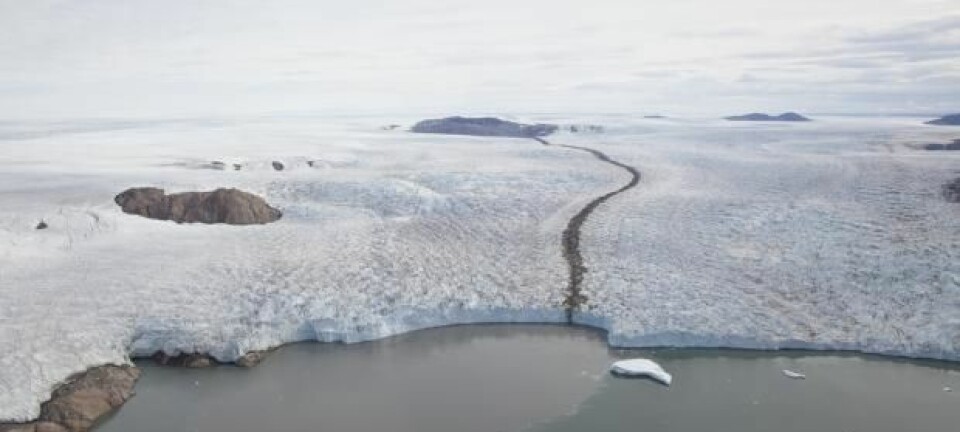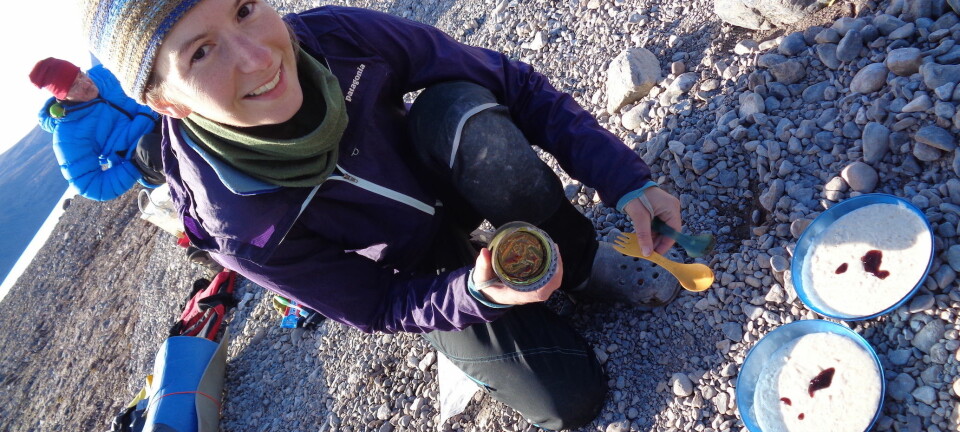
Human-induced global warming began 180 years ago
An international team of scientists have detected a warming signal in some parts of the globe from as early as the 1830s.
New evidence suggests that global warming is not the modern phenomenon that many of us may believe it to be, but actually began 180 years ago.
The new study published in Nature, reports that humans have had a measurable influence on the climate since the early days of industrialisation and in response to relatively low emissions of greenhouse gas emissions compared to the present day (see Fact Box).
“What’s new and very exciting is that already by the 1830s you can see the influence of human induced warming, first in the tropics and also in the Arctic, and this was earlier than what we had generally thought or expected,” says co-author Dr. Helena Filipsson from the Department of Geology, Lund University, Sweden.
“We were surprised that you can detect the onset of warming so early on because the emissions of greenhouse gases back then were so much smaller than what we are emitting [today] and the climate responded so quickly,” says Filipsson.

Co-author Professor Marit-Solveig Seidenkrantz, from the Department of Geoscience, Aarhus University, Denmark, agrees.
“The industrial revolution started in the mid 1700s, but we were quite amazed that we saw a signal so early,” she says.
Implications for current global warming
Atmospheric scientist, Associate Professor Lisa Alexander from the University of New South Wales, Australia, who was not involved in the new study, is intrigued by the results.
“It's a very interesting paper. If true, then the time at which we can discern a human signature on
regional temperatures is much earlier than previous studies have estimated,” she wrote in an email to ScienceNordic.
“When manufacturing was really just starting off and we were only really just starting to harness fossil fuels, even those small increases in carbon dioxide in the atmosphere were enough to make a measurable impact on Earth’s climate,”
Nerilie Abram, The Australian National University (ANU)
“This is important as it could indicate that our climate is more sensitive to greenhouse gas forcing than we previously thought and this obviously has implications for our estimates of future warming,” she writes.
An international agreement signed by the leaders of 197 nations in Paris last year, agreed to try to limit greenhouse gas emissions and halt global warming at 1.5 degrees centigrade above pre-industrial climate.
But deciding on when this pre-industrial reference period should fall is a topic of ongoing discussions among many climate scientists. The period around 1880 to 1900 is commonly used, which is around the time that meteorological records of climate began. But the new results suggest that this is far too late.
“That baseline period is still entirely within the time when we were already altering the climate because of greenhouse gases. We were only altering it a little bit because we only had a small increase in greenhouse gases, but there’s still a factor in there that we haven’t taken into account yet,” says lead-author Dr. Nerilie Abram, from the Australian National University.
Read more: COP21: What does two degrees Celsius global warming look like?
Long records of climate detect early onset of global warming
The international team of scientists behind the new study started with the simple question: When did global warming begin?
“It’s a really fundamental question, but it turns out to be a question that you can’t answer by just using our observational records of how climate has changed throughout the 20th century,” says Abram.
Abram and her colleagues analysed 500 years worth of previously published temperature data that were reconstructed from so-called natural archives of climate from around the world.
“We pulled together information from natural archives. So using things like tree rings, ice-cores, corals, all those natural recorders of climate of the past and long climate model simulations over the last 500 years, to pinpoint exactly when the recent warming began,” says Abram.
Read More: Industrialisation killed global cooling
Is this early warming really caused by greenhouse gases?
While there is no doubt that global warming is largely caused by the warming effect of man-made greenhouse gases in the atmosphere, there are other driving factors--so-called natural forcings--like volcanic eruptions or variations to the amount of energy emitted by the sun that climate scientists also take into account.
To tease out the causes of the early warming in the 1830s, Abram and her team analysed a series of climate model simulations and input all of these climate forcings to see which ones were needed to explain the onset of warming in the 1830s.
“We do find that if we run those climate simulations with all the natural forcings including volcanic eruptions, as well as greenhouse gases, then we replicate the onset of warming that we see in the reconstructions very well, particularly in the tropical oceans and over the northern hemisphere,” says Abram.
“But we also find--and this is the key point where we can start to attribute this early warning to greenhouse gases--if we look at climate simulations that have only been run with greenhouse gases and they haven’t had those extra natural forcings applied to the models as well, then we also see this early development of the industrial era warming,” she says.
Read More: COP21 agreement is unclear and unrealistic: scientists
Colleague: the early onset is not only due to greenhouse gases
But atmospheric scientist Dr. Michael Mann from Penn State University, USA, is not convinced that this was the right way to tackle the problem.
He points out that the early warming occurs not long after a cool period, often attributed in-part to two large volcanic eruptions in the previous years. By comparing the very early warming to this cool period, the new study exaggerates the amount of warming at this time that can be attributed to greenhouse gas emissions, he writes in an email to ScienceNordic.
“They are misinterpreting the greater cooling in the early 1800s due to the twin large volcanic eruptions as a lower baseline, and then arguing that there was more [man made] warming relative to that depressed early 1800s baseline. That is confusing greenhouse warming with the response from volcanic cooling,” writes Mann.
Mann agrees that global warming most likely began during the mid 19th century due to the emission of greenhouse gases, but that different statistical techniques are needed to carefully tease out the causes of earlier warming.
“I am frankly troubled by this sort of unconstrained speculation and over-interpretation. It might help generate headlines, but it doesn’t inform the public discourse over climate change,” he writes.
But Abram and her co-authors are confident in their interpretation.
“Our initial reaction to detecting this early onset of warming was the same. But as we continued to test the data and our methods it became clear that you don’t need these big eruptions in the early 1800s to explain the early warming,” says Abram.
"This constant questioning of the data and our interpretations is how science works, and while our team has come to a different interpretation to Michael Mann I think that we would all agree that the key point is that we need to take the 19th Century into account if we are to see the full picture of how humans have changed Earth’s climate”.
Seidenkrantz agrees.
“Testing ideas is how science works. We collect evidence and question continuously what this means. The conclusions in the paper are our best interpretation of the data at this time, but the scientific research doesn’t stop here and the whole community will continue to develop our knowledge of how Earth’s climate systems respond to greenhouse gases.”
Video: Lead-author Nerile Abram from the Australian National University discusses her new research (Video: ANU)
Scientific links
- Early onset of industrial-era warming across the oceans and continents. DOI 10.1038/nature19082
- Separating Forced from Chaotic Climate Variability over the Past Millennium. DOI 10.1175/JCLI-D-12-00826.1










